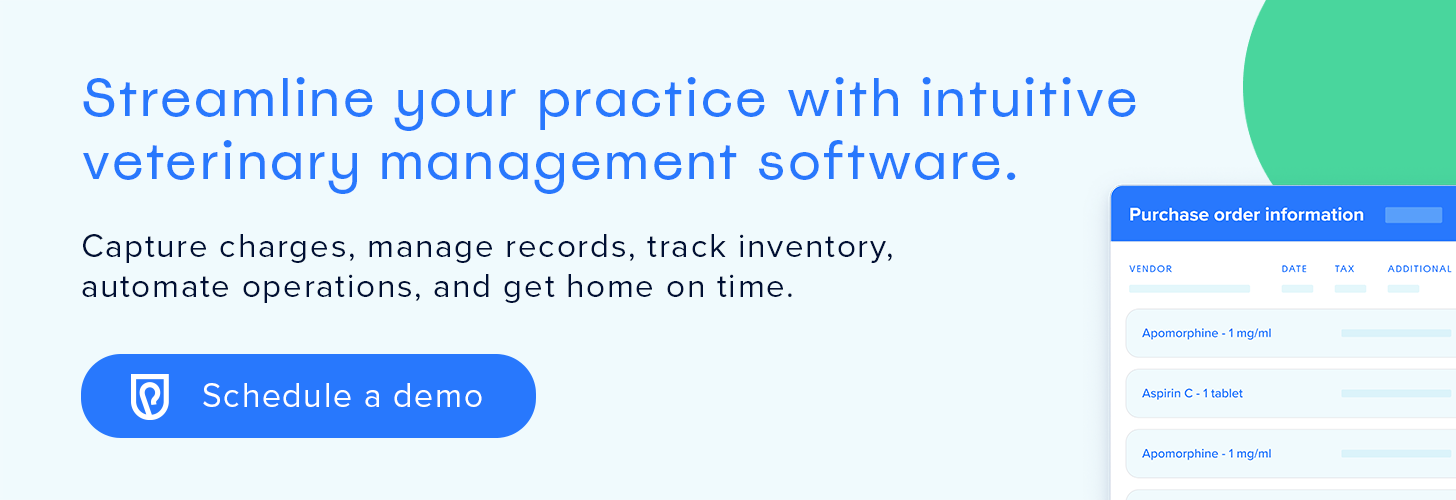Navigating End-of-Life Conversations with Clients

In veterinary medicine, end-of-life conversations are among the most challenging yet essential parts of the job, requiring a careful balance of compassion, empathy, and unadulterated truth.
How you handle these sensitive moments will vary by client, patient, and circumstance. The following end-of-life conversation guide can serve as a framework for this unwieldy and emotional task.
Understanding the client’s perspective
Before initiating an end-of-life conversation, consider the client’s emotional state and their relationship with their pet. Approaching the discussion with this understanding ensures you speak from a position of genuine empathy and a desire to do what’s right for the pet and pet parent.
Begin the discussion by acknowledging or naming the emotional difficulty of the moment (e.g., “I know you love Charlie so much, and that’s what makes this so difficult”). Guide the discussion with open-ended questions and actively listen to the client’s answers. Their responses will reveal how they perceive their pet’s condition and help you provide appropriate support.
Communicating the pet’s prognosis
When discussing a pet’s prognosis, be truthful yet compassionate. Use straightforward language and avoid medical jargon. Provide a balanced view of the situation, including the pet’s current quality of life and potential outcomes for future treatments or procedures.
Incorporate pet quality-of-life scales to help pet owners objectively evaluate and understand their pet’s physical and emotional health. Pet quality-of-life scales can offer powerful yet unobtrusive insights to help clients recognize their pet’s suffering and prepare for end-of-life decisions.
Exploring end-of-life options for pets
If appropriate, introduce hospice and palliative care as an option to manage the pet’s comfort in their final days. Clearly describe each option, emphasizing the short-term nature of these solutions to manage pain, ensure nutrition, and prepare the pet and owner for a gentle goodbye. Setting realistic expectations about the progression of the pet’s condition, including the eventual need for euthanasia, will give clients a sense of peace and protect them from having to make snap decisions later.
The euthanasia talk
Ideally, approach the topic of euthanasia gradually during ongoing discussions about the pet’s quality of life. Avoid bringing the matter up unexpectedly, as this can cause a deep emotional shock and potentially delay a necessary euthanasia.
At the appropriate time, talk through the euthanasia process with the client. Observe their responses and nonverbal cues to determine the right pace and amount of detail for their needs. Transparency about the process can help ease a pet parent’s fears, but too much information can feel overwhelming.
Providing grief support before and after end of life
Support for the client’s anticipatory grief and bereavement reassures them that their feelings are valid, expected, and OK to share. Small gestures such as providing professional grief resources, expressing sympathy, sharing a personal loss, or encouraging remembrance to honor their deceased pets can prevent feelings of isolation and protect the client’s mental well-being.
While condolence cards are appropriate after a pet’s passing, consider also reaching out to grieving clients via phone or text to share a message of empathy and support. Periodic check-ins for clients with pets in hospice or palliative care can be a gentle way to show support for both the patient and their family.
Guiding clients through end-of-life care for their pets
Navigating pet end-of-life conversations requires a balance of sensitivity and objectivity. While the pet’s welfare, dignity, and comfort must remain the primary focus, a thoughtful, empathetic, and client-centered approach is essential. With compassion, clear communication, and ongoing support, veterinary teams can help clients face the difficult decisions and transitions of pet end-of-life care while honoring the special bond they shared.
Shepherd Veterinary Software is a cloud-based practice management software that helps you effortlessly manage your workflow and make more time for connection, conversation, and moments of compassion. Schedule your demo today and discover how Shepherd’s intuitive design and powerful automations allow veterinary professionals to find joy in their work.
